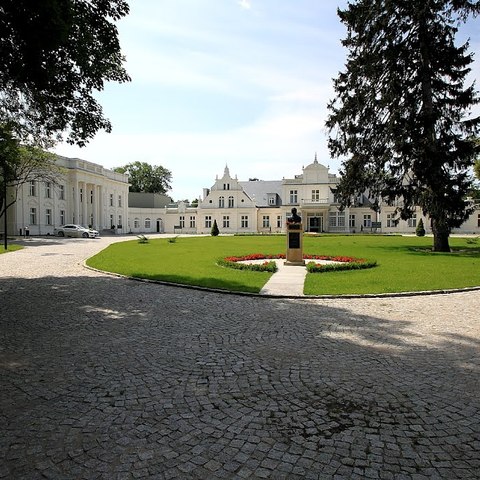Composers / Fryderyk Chopin / Places catalog
Turzno
Turzno is first attested in the thirteenth century in connection with a property conveyance from Konrad Mazowiecki to Bp Chrystian. In the early eighteenth century, Florian Nowicki sold the land to Jakub Ossówka-Zboiński. In 1789, Turzno came into the possession of General Benedykt Jeżewski, through his marriage to Józefa Zboińska. The chapel founded by the Jeżewskis at the end of the eighteenth century is still there. Augustyn Działowski, who married Katarzyna Jeżewska, became the owner in 1801. In 1861, the property was acquired by the Gajewski family, and it was largely through their skilful management that by the end of the nineteenth century it had increased to around 6,000 ha and included Elzanowo, Wielka Łąka, Piątkowo, Mgowo and Wałycz, as well as Turzno.
Chopin visited Turzno at least twice. He spent some of his 1825 summer holiday in Szafarnia (approx. 35 km from Turzno). His hosts, the Dziewanowskis, did their best to show him around and frequently organised trips to nearby places, where he could make new friends and display the musical prowess for which he was becoming increasingly renowned. In a letter home from Szafarnia (26 August 1825), Chopin wrote: ‘Tomorrow morning we are going to Turzno, and we aren’t supposed to be returning until Wednesday’. It seems safe to assume that he was received by the proprietors, namely Augustyn and Katarzyna Działowski, their son Ksawery and their two daughters Julianna and Józefa.
Chopin made his second visit en route to Pomerania in the summer of 1827. The composer, who was spending his holidays on Count Ksawery Zboiński’s Kowalewo property, wrote a letter home in which he mentioned Turzno as a staging point on the way to Gdańsk. Ksawery Działowski and Ksawery Zboiński were first cousins, as their mothers were sisters. Unfortunately, nothing is known about Chopin’s visit to Turzno.
The eclectic palace, built on the site of the former Zboiński residence in the latter half of the nineteenth century, is still there. The building was designed by Henry Marconi, a renowned architect of Italian descent whose work includes the Hotel Europejski and the Branicki Palace in Warsaw. The palace owes its current appearance to having been renovated and extended in the early twentieth century. This involved building an annexe and connecting it to the palace via an ‘Old Roman’ gallery.
The last pre-war owner of Turzno was Rafał Gajewski. During the Second World War, the palace was converted into a rehabilitation centre for German soldiers, and valuable possessions (including artworks and books collections) were taken away. After the war, the building was taken over by the State Treasury and used as a school.
The sixteen-hectare English landscape park around the palace is one of the most impressive in the Kujawy-Pomerania voivodeship. There is a valuable stretch of forest comprising over fifty species of coniferous and deciduous trees. The ‘Dąb Działowskiego’ [Działowski oak] has a girth of 430 cm and is a particularly valuable piece of natural heritage. Apart from the palace, the Neo-Gothic park pavilion is of architectural interest. It was designed by Marconi and looks like a small castle.
Since 2007, the palace complex has had new owners and has been renovated and extended; among other things, another wing has been added and the surrounding parkland rearranged. A four-star hotel and conference centre were opened in February 2012.
The new owners have also had a bust of Chopin placed at the end of an avenue of chestnut trees to commemorate his stay in Turzno.
-

Chopin monument in Turzno. Phot. Małgorzata Litwin.
-

Palace in Turzno, phot. Andrzej Maćkiewicz.